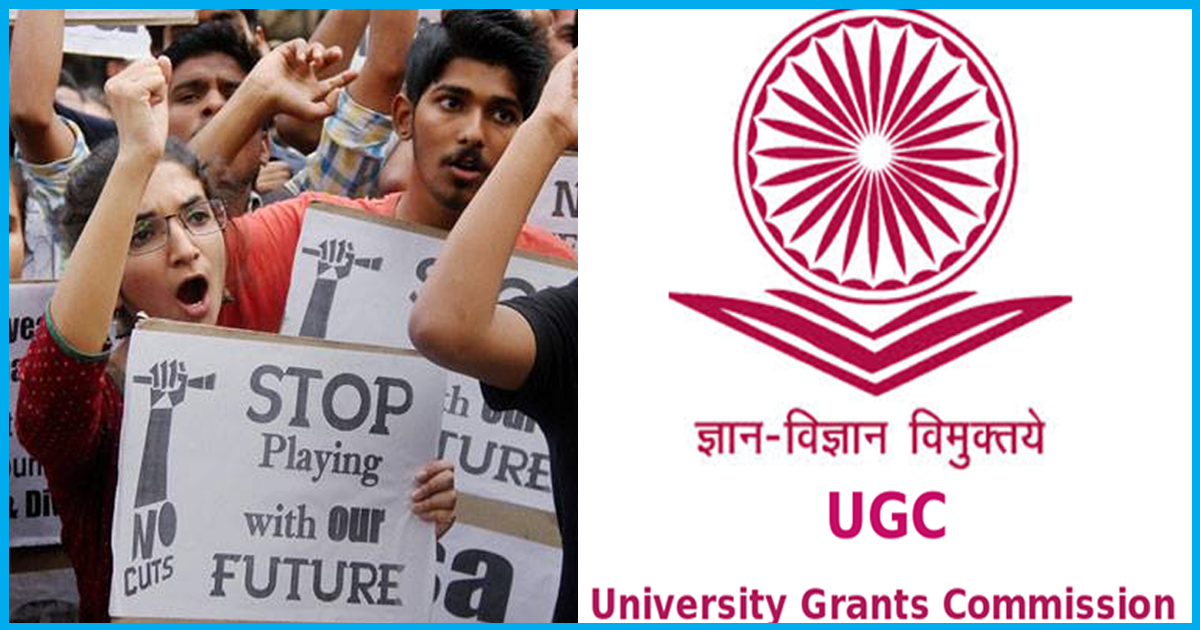
UGC Drafts New Rules For ‘Graded Autonomy’: The Future Of Prestigious Institutions At Stake
13 Jun 2017 1:19 PM GMT
The higher education regulating and funding agency, University Grants Commission has made a public draft of regulations and guidelines, UGC (Categorization of Universities for Grant of Graded Autonomy) Regulations 2017 on June 2 which is open to public view until June 15.
The categorisation
The draft guidelines talk of three levels of categories for universities that would be based on their performance. They would be enjoying different degrees of ‘autonomy’, but it is important to note that this is only from the viewpoint of administrative control and does not imply more academic freedom.
The regulations aim to categorise all the UGC-recognised public, private and deemed universities into three groups, each of which will bestow different degrees of autonomy to the institutions.
According to the new draft, all universities and colleges would be graded into categories I/II/III based on their National Assessment and Accreditation Council (NAAC) accreditation and National Institute Ranking Framework (NIRF) rankings, as reported by Outlook India.
The institutions having a NAAC score of more than 3.5 or an NIRF ranking up to 50 for two consecutive years will be in Category I. The institutions having NAAC score from 3.01 to 3.49 or NIRF ranking between 51 to 100 will be in Category II, and rest in Category III.
However, one needs to look beneath the veneer of the ‘graded autonomy’ and understand how the UGC ‘s recent guidelines have not given any academic freedom for independently framing syllabi, course structures and admission policies. Instead, it aims at taking higher education on the paths of privatisation by reducing public funds.
Self-financed courses: A boon or a bane?
The draft enables the top category of government institutions to start new courses and departments without seeking permission, but only if this is done through ‘self-financed’ courses.
Although, there a belief that such a measure would only benefit the institutions but academics and officials are of the opinion that the new regulations would result in a hike of fees of the top universities and eventually lead to a restricted access of a few into the arena of higher education.
Linking accreditation and ranking to funding: not a wise move
Subhadoy Dasgupta, president of the West Bengal College and University Teachers Association, has strictly condemned these guidelines. Speaking to The Logical Indian, he clearly mentioned that these moves can be interpreted as a measure to minimise the education based on public funds. He said, “Although the entire idea of linking up gradation of universities with their performance, as done by NAAC and NRIF, sounds appealing, the lack of transparency in the entire procedure mars the well-intentioned move. Institutions, in an attempt to grab the funding, would resort to means that might suppress the reality.”
Weaning of public funds
In addition to promoting the “self-financing mode” for new courses, centres and departments, the draft guidelines also permit universities to start skill courses and research parks, recruit foreign faculty, and admit foreign students to build an incentivising infrastructure that would attract qualified faculty from all over the world – all of it funded by resources generated independently.
Rajesh Jha, a member of Delhi University’s executive council, told that these measures by the UGC have only emboldened the idea that public institutions should no longer look up to the government for financing their expansion
“In February, the executive council cleared new undergraduate courses for the colleges,” Jha explained. “Those are stuck with [the commission], which is insisting colleges make them self-financing. The withdrawal of funds has already begun,” he said as reported by Scroll.
The universities, in an attempt to cut down the costs, would make more ad hoc appointments that would have a negative impact on the workforce and the standard of teaching.
Some departments in a worse situation
Another significant aspect of the draft guidelines is that the humanities and liberal arts institutions would be suffering much more than the professional courses. Jadavpur University’s pharmaceutical technology department has generated funds by testing drugs for pharma companies. Similarly, the departments of electrical engineering and civil engineering have checked machinery, conducted feasibility studies and tested soil for the private sector, receiving some funds in this manner. The Indian Institutes of Technology, similarly, have centres, scholarships and lecture series funded by entrepreneurs and companies.
However, the case would not be the same for humanities and even that of theoretical sciences.
The draft guidelines also do not contain details about the Category 2 and Category 3 institutions; the fate of the affiliated colleges have not been decided by the draft yet.
The teaching community all over India has been protesting against these draconian laws that have brazenly pushed the higher education system towards privatisation.
The Logical Indian condemns such laws that have, under the garb of ‘autonomy’ paved the way for privatisation. It appeals to the erudite minds of the country to raise their voices in unison against laws like this.
 All section
All section













